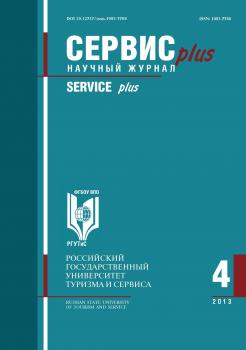The article discusses the process of film distribution in Soviet cinema in the 1970s. This complex, multi-path way of the film to the viewer that begins with scenarios of application, and finishes with the replication of film prints. This article describes the mechanism of film award, the system of payment of fees (“production fees”) of the Soviet filmmakers, depending on the category and the payment process “potirazhnye” («printing fees»). The author analyzes the work of «GUKK»- General Directorate of cinema spreading and the distribution, the specifics of its work in the “stagnation”, considering the work of the distribution companies and cinemas, the mechanism of distribution of gross income of cinemas, in the period of “stagnation”, they were rather nominal in nature. Every filmmaker knew only his job and his salary, the overall picture of the industry was not inter-esting for him. Distributing and returning links of Soviet cinema, in essence, were not for its return and were separated from production. According to the notorious principle of thematic planning it was obligatory to make certain proportions of films about the leading role of the party and its leaders, revolution, the working class, the collective farm of the village and etc. The Soviet Studio were to run the movies of similar subjects every year regardless of whether they had appropriate, high-quality scripts, good Directors and, most importantly, potential audience. Based on the studied material the author concludes that in the 1970-ies the Central headquarters of the Soviet cinematography – Institute of State cinema of USSR –determined: who, what, where and when to watch at the cinemas. The professional consciousness of each member of the creative team, therefore, did not fix the desire to achieve success with the audience, and the willingness to achieve recognition by the College of the Institute of State cinema and the film award of the highest category (which assumed significant additional benefits and bonuses). However, Institute of State cinema («Goskino»), the state cinema management was not the ultimate authority in the control of cinema industry process. At the head of the system was the Communist party.
Distributing and returning mechanism, film distribution, spreading of the cinema, Soviet cinema, “stagnation”
1. Viktorov V. Segodnya dumat´ o dne zavtrashnem. Kinomekhanik. 1979. No 79.
2. Dialog o segodnyashnem kino. S simpoziuma vo VNII kinoiskusstva. M.: VNII kinoiskusstva, Goskino SSSR. 1989. 151 s.
3. Zezina M. Kinoprokat i massovyy zritel´ v gody «ottepeli». Istoriya strany. Istoriya kino / ped. S. S. Sekrinskiy. M.: Znak, 2004. 496 c. S. 389-412.
4. Zorkaya N. Istoriya sovetskogo kino. SPb.: ALETEYYa, 2005. 544 s.
5. Kokarev I. Rossiyskiy kinematograf mezhdu proshlym i budushchim. M.: Rossiyskiy fond kul´tury, Russkaya panorama, 2001. 448 s.
6. Kudryavtsev S. Tabor ukhodit... v kassu. Natsional´nye rekordsmeny sovetskogo kinoprokata. Kinoforum. 2007. No 1.
7. Letopis´ rossiyskogo kino. 1966-1980. T. 4 / sost. Fomin V.I. M.: Kanon+, 2015. 688 s.
8. Medvedev A. Tol´ko o kino. Iskusstvo kino. 1999. No 11.
9. Noveyshaya istoriya otechestvennogo kino. 1986-2000. Kino i kontekst. T. 5 / Red. L. Arkus. SPb.:Seans, 2004. 825 s.
10. Fomin V. Kino i vlast´. M.: Materik, 1996. 370 s.

















